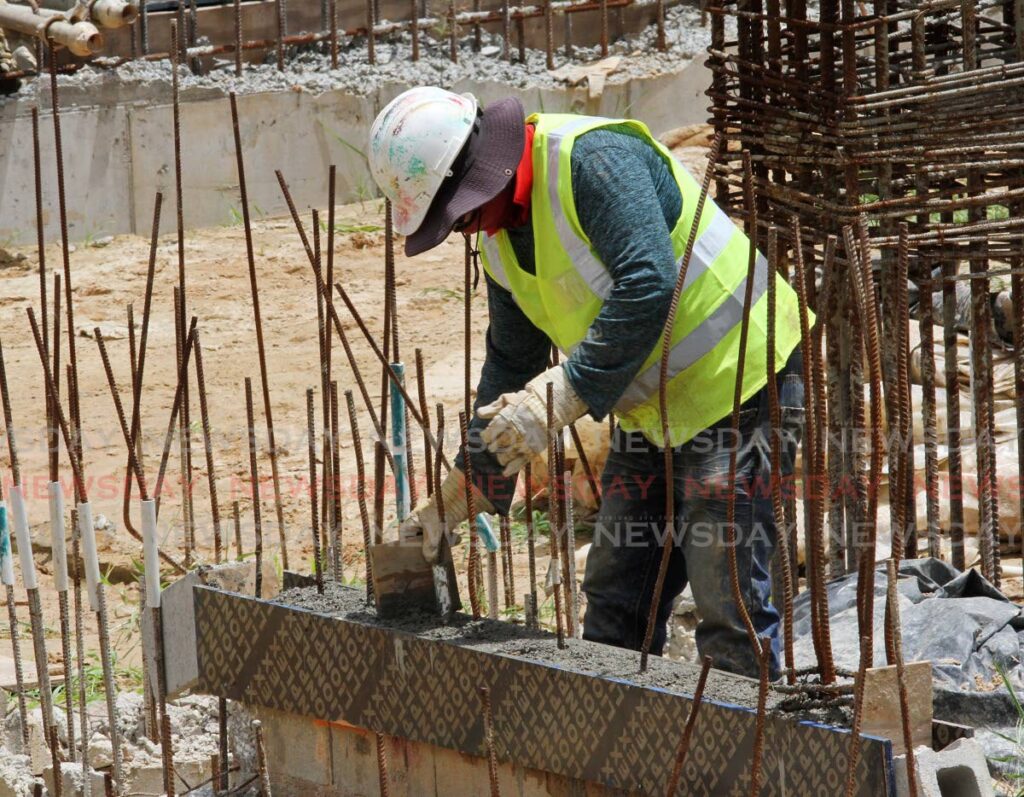Construction sector looks for alternative markets in 2022

Construction investments and projects outside of Trinidad and Tobago are the next steps for contractors to look at in order to remain afloat, says president of the Trinidad and Tobago Contractors’ Association (TTCA) Glen Mahabirsingh.
In an interview with Business Day, he said survival for the sector is critical because the effects of the covid19 pandemic have put a tremendous strain on local operations.
With price increases over the last 18 months in steel, steel-related products, cement, lumber and aggregate, local contractors cannot continue on the same path into 2022, he bemoaned.
Mahabirsingh said local contractors had the knowledge and had ample resources to extend their reach outside of TT, especially in other countries in the region.
He explained that by doing this the local sector could remain afloat, create jobs, and provide a stimulus for the economy.
“The contractors have a significant amount of expertise in construction practice, they have great depth of knowledge in dealing with specific projects and have tremendous resources and equipment.
“One of the opportunities would be to create projects in TT that could earn foreign exchange and in agriculture and manufacturing there is great potential. We can also provide construction services abroad, especially in developing and emerging economies.”
Mahabirsingh said Guyana is a lucrative market because of its new found wealth in the oil and gas and its thrust towards quick development.
“They (Guyana) have started to develop all aspects of their infrastructure such as roads, schools, and hospitals. So, there is an opportunity for operators in TT to provide services and become a foreign exchange earner.
Grenada, St Lucia, and Dominica also presented good opportunities, he said.
Mahabirsingh said the construction sector employed around 89,000 people with a different and specialised skillset in various tiers and is valued at about $9.4 billion.
The sector, he pointed out, is critical to job creation and improving the standard of living for the population.
“Construction has always been viewed as the cornerstone for economic development. For every job created on a construction site there are at least four jobs created in the supporting industry, in sectors such as manufacturing, transportation, and food and beverage.”
Additionally, he said most of the local construction projects are government-funded and timely payments would be a critical factor for the sector’s survival.
“One of the important things in construction is cash flow and timely payments would definitely support the life of the industry. Contractors usually expend on materials, labour, management, installation, certification up front. A contractor must spend first before he gets paid.”
Based on international market prices of construction materials, Mahabirsingh said there should not be a contraction but rather a slow-down of personal projects.
He pointed out that people doing home renovations, for example, would have to reconsider this based on their disposable income because of the knock-on effects of the covid19 pandemic in other sectors.
In 2021, the sector took a hard hit, after it was completely closed for several months because of the Government implemented closure of various sectors of the economy due to the spread of the covid19 virus. It was reopened July 5. It recently had to deal with monopoly supplier Trinidad Cement Ltd's eight-15 per cent increase in prices for eco- and premium cement which took effect on December 20. Government said it will increase the quota for imported cement from 75,000 tonnes to 150,000 in 2022 and the Council for Trade and Economic Development also agreed, at the request of TT, to suspend the common external tariff and decrease the duty from 50 per cent to 20 per cent on other hydraulic cements for one year, starting January.
The sector has also been identified in the Roadmap for TT Post-Covid19 Pandemic report developed last July by a team commissioned by the Prime Minister.
The plan highlighted several construction projects which included 527 projects intended to inject about $3.2 billion into the sector, accelerate private sector ‘shovel-ready’ projects which exceed $600 million which included revitalisation of main city centres such as Port of Spain, San Fernando and Scarborough.


Comments
"Construction sector looks for alternative markets in 2022"